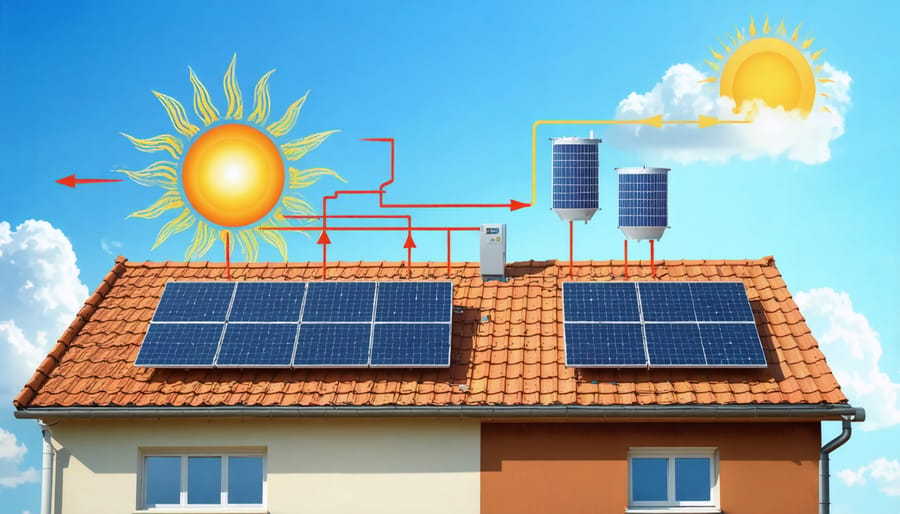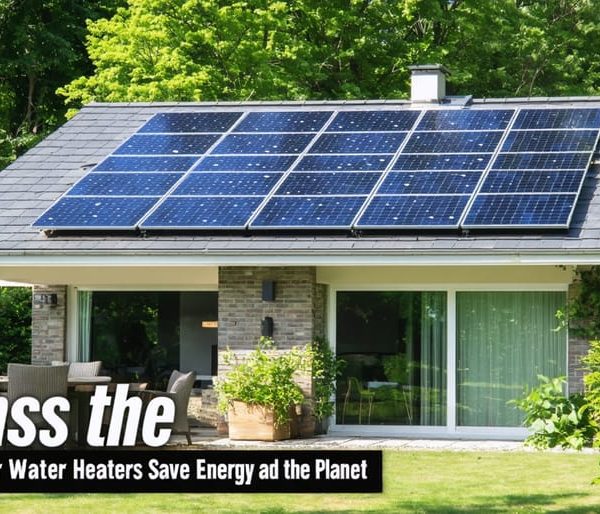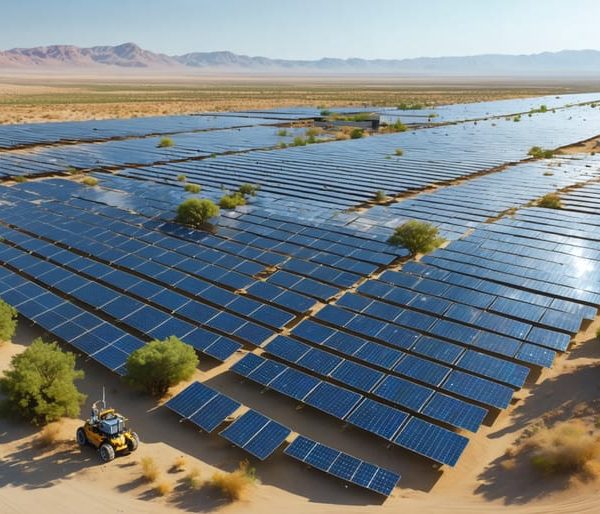Slash Your Energy Bills: How Thermal Solar Water Heating Actually Works
Harness the sun’s boundless energy to slash your water heating bills by up to 80% through thermal solar heating – nature’s most efficient way to warm your home and water. This proven technology uses specialized collectors mounted on your roof to capture solar radiation, converting it into clean, sustainable heat that works even on cloudy days. Unlike traditional water heaters that constantly consume electricity or gas, solar thermal systems tap into a free, renewable energy source that’s been warming our planet for billions of years.
Today’s advanced solar thermal systems combine time-tested principles with cutting-edge materials and smart controls, offering homeowners a reliable, low-maintenance solution for year-round hot water needs. Whether you’re building a new home or upgrading your existing water heating system, thermal solar heating represents a smart investment that pays dividends through reduced energy costs while shrinking your carbon footprint.
By capturing and storing the sun’s thermal energy, these systems provide consistent hot water while protecting you from rising utility costs. Modern installations seamlessly integrate with existing water heaters, ensuring you never run short on hot water even during extended cloudy periods.
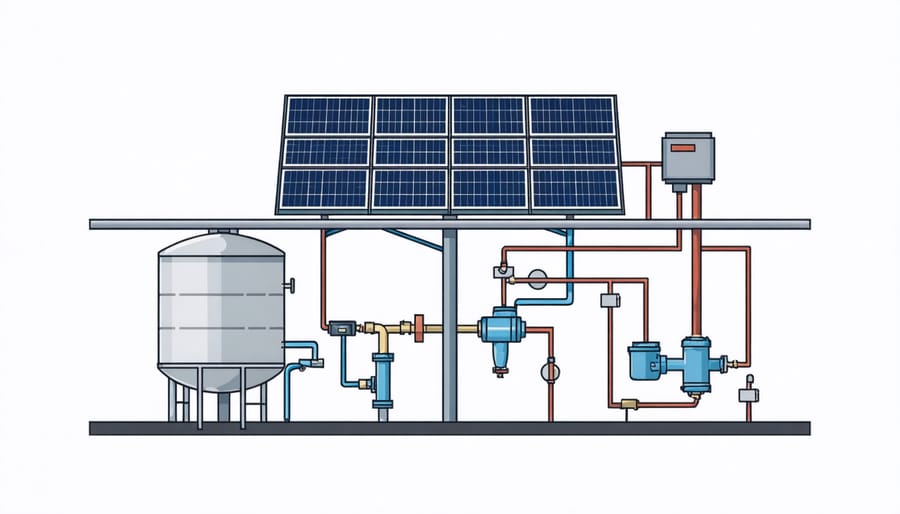
How Thermal Solar Water Heating Systems Capture the Sun’s Energy
Solar Collectors: Your Home’s Energy Gateway
Solar collectors are the heart of any thermal solar heating system, serving as your home’s gateway to free, renewable energy from the sun. These innovative devices come in two main varieties: flat-plate collectors and evacuated tube collectors, each offering unique advantages for different situations.
Flat-plate collectors, the most common type, consist of a dark, flat surface that absorbs sunlight and transfers heat to fluid-filled pipes underneath. These collectors excel in warm climates and are perfect for passive solar water heating systems, offering reliable performance at a lower initial cost.
Evacuated tube collectors feature rows of glass tubes with excellent insulation properties. While typically more expensive, they perform exceptionally well in colder climates and can achieve higher temperatures than flat-plate collectors. Their cylindrical design captures sunlight more effectively throughout the day, making them ideal for year-round use in areas with less direct sunlight.
The efficiency of your solar collector depends on several factors:
– Orientation and tilt angle
– Local climate conditions
– Quality of insulation
– Surface coating type
– Regular maintenance and cleaning
For most homeowners, a well-installed flat-plate collector system provides the best balance of cost and performance. However, those in colder regions might find the additional investment in evacuated tube collectors worthwhile for their superior cold-weather performance.
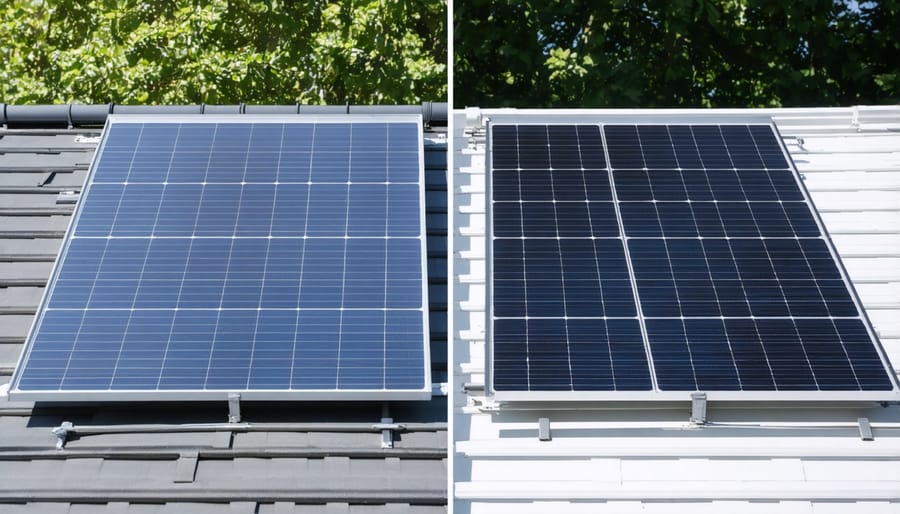
Storage Tanks and Heat Transfer: The Complete System
The heart of any thermal solar heating system lies in its storage and distribution components. When exploring various solar water heating methods, you’ll find that storage tanks play a crucial role in maintaining hot water availability throughout the day and night.
These specially designed tanks are well-insulated to minimize heat loss and typically hold between 50 and 120 gallons of water for residential systems. The tank’s inner layer is often made of copper or stainless steel to prevent corrosion and ensure longevity. A heat exchanger, usually in the form of copper coils, transfers the solar-collected heat from the circulation fluid to the water in the tank.
The distribution system uses a network of insulated pipes to deliver hot water wherever it’s needed in your home. Most systems include a backup heating element that kicks in during cloudy days or high-demand periods, ensuring you never run out of hot water. Smart controllers monitor water temperature and system pressure, automatically adjusting flow rates and backup heating as needed.
For optimal performance, tanks should be placed as close as possible to both the collectors and points of use, reducing heat loss during transfer. Many homeowners choose to install their storage tanks in a garage or utility room, where they’re protected from the elements while remaining easily accessible for maintenance.
Real Cost Benefits of Solar Water Heating
Monthly Savings and Payback Period
Installing a thermal solar heating system typically leads to significant monthly savings on your utility bills. Homeowners can expect to reduce their water heating costs by 50-80%, depending on their location and system size. The return on investment for solar heating is particularly attractive, with most systems paying for themselves within 4-8 years.
For an average household spending $600 annually on water heating, switching to solar thermal can result in savings between $300-$480 per year. These savings increase substantially in regions with higher energy costs or greater solar exposure. Commercial properties often see even more dramatic results, with some businesses reporting annual savings of thousands of dollars.
The payback period varies based on several factors, including initial installation costs, local energy rates, and available tax incentives. Many states offer rebates and tax credits that can significantly reduce the upfront investment, shortening the payback period to as little as 3-5 years. After this period, the system continues to provide essentially free hot water for decades, with minimal maintenance costs.
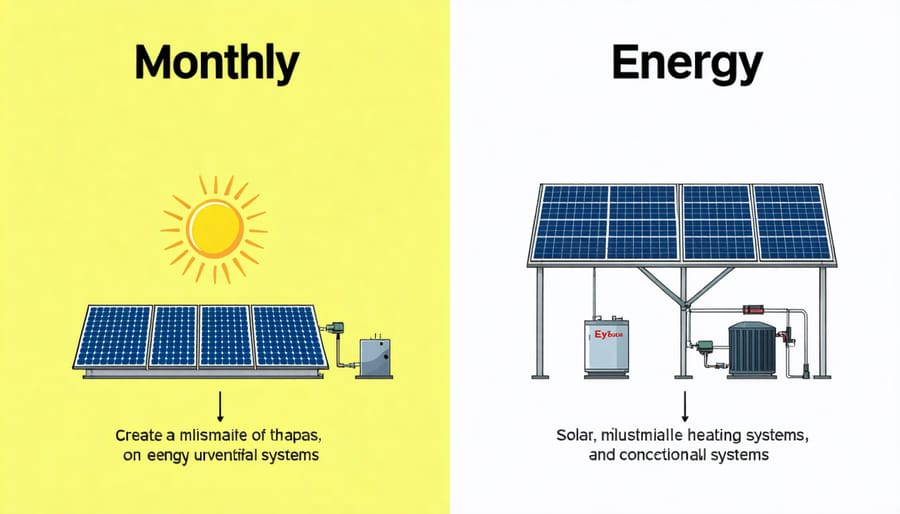
Available Tax Incentives and Rebates
Installing a thermal solar heating system can be more affordable than you might think, thanks to various government incentives and rebates. The federal solar tax credit, also known as the Investment Tax Credit (ITC), allows you to deduct 30% of your installation costs from your federal taxes through 2032. This significant saving applies to both residential and commercial installations.
Many states offer additional incentives, ranging from direct rebates to property tax exemptions. For example, California provides rebates through the CSI-Thermal Program, while Massachusetts offers significant incentives through the Mass Save program. Some utility companies also provide extra rebates or performance-based incentives for solar thermal systems.
Local municipalities may offer additional perks, such as expedited permits or reduced permit fees for solar installations. Many states also have sales tax exemptions on solar equipment purchases and property tax exemptions for the added home value from solar installations.
Remember to check the Database of State Incentives for Renewables & Efficiency (DSIRE) for the most current incentives in your area, as programs and offerings frequently change.
Installation Essentials for Your Home
Optimal Placement and Sizing
The success of your thermal solar heating system largely depends on proper placement and sizing. For optimal performance, solar collectors should face true south in the Northern Hemisphere, with a slight adjustment of 15 degrees east or west being acceptable. The ideal tilt angle typically matches your location’s latitude, though adding 15 degrees provides better winter performance when heating needs are highest.
Roof installations are most common, but ground-mounted systems work well when roof orientation isn’t ideal or space is limited. Ensure your chosen location receives maximum sunlight exposure, particularly during peak hours between 10 AM and 4 PM. Avoid areas where trees, buildings, or other structures cast shadows on the collectors.
When sizing your system, consider these key factors:
– Daily hot water consumption
– Local climate conditions
– Available installation space
– Backup heating requirements
A typical family of four usually requires 50-80 square feet of collector area and a 60-80 gallon storage tank. However, your specific needs may vary. In colder climates, you might need up to 1.5 times more collector area to achieve the same performance as warmer regions.
Professional installers can help determine the exact system size using detailed calculations that account for your household’s unique requirements. They’ll also consider factors like peak usage times and seasonal variations in solar radiation. Remember that while a larger system provides more hot water, it also increases initial costs. The goal is finding the sweet spot between performance and investment to maximize your return on investment while meeting your hot water needs.
Professional vs DIY Installation
When it comes to installing a thermal solar heating system, homeowners have two main options: professional installation or the DIY approach. Each path has its distinct advantages and considerations worth exploring.
Professional installation offers peace of mind through expert knowledge and experience. Certified installers understand local building codes, safety requirements, and optimal system placement. They can properly size your system, ensure correct roof mounting, and handle complex plumbing connections. Professional installations typically come with warranties and ongoing support, which can be invaluable for long-term system performance.
For DIY enthusiasts with basic plumbing and electrical skills, self-installation can reduce costs by 20-30%. However, it requires careful planning and research. You’ll need to:
– Obtain necessary permits and understand local regulations
– Select appropriate components and tools
– Ensure proper roof structural support
– Connect the system to existing plumbing
– Follow safety protocols for working at heights
Before choosing DIY installation, consider these factors:
– Your technical expertise and comfort with hands-on projects
– Available time commitment (typically 2-4 days for installation)
– Access to proper tools and safety equipment
– Understanding of local building codes
– Physical ability to handle heavy panels and work on roofs
Many homeowners opt for a hybrid approach, handling simpler tasks while leaving critical components to professionals. This can balance cost savings with installation quality and safety. Whichever route you choose, proper installation is crucial for system efficiency and longevity.
Maintenance and Long-Term Performance
Regular Maintenance Checklist
Regular maintenance is crucial for maintaining optimal solar water heating efficiency and extending your system’s lifespan. Here’s a simple checklist to keep your thermal solar heating system running smoothly:
Monthly Tasks:
• Check collector panels for dust, leaves, or debris
• Inspect exposed pipes for signs of damage or leaks
• Monitor system pressure gauge readings
• Review system performance through your monitoring display
Quarterly Tasks:
• Clean collector surfaces with water and mild soap
• Check roof mounting brackets and supports
• Inspect insulation on all exposed pipes
• Test pressure relief valve operation
• Verify antifreeze levels (closed-loop systems)
Annual Tasks:
• Professional inspection of all system components
• Heat transfer fluid analysis and replacement if needed
• Tank inspection for sediment buildup
• Sensor and controller calibration check
• Pump maintenance and lubrication
• Anode rod inspection and replacement if necessary
Keep a maintenance log to track completed tasks and system performance. If you notice any significant changes in system efficiency or unusual noises, contact a qualified solar technician immediately. Regular maintenance not only ensures optimal performance but also helps prevent costly repairs down the line.
Pro tip: Schedule your annual inspection during spring to prepare your system for peak summer performance.
Troubleshooting Common Issues
Even the best-maintained thermal solar heating systems can occasionally experience issues. Here are solutions to common problems you might encounter:
If you notice reduced hot water output, first check for dust or debris on your solar collectors. A simple cleaning with water and a soft brush can often restore efficiency. During winter, verify that your freeze protection system is working properly to prevent pipe damage.
When your system shows inconsistent performance, inspect the controller settings and ensure all sensors are correctly positioned and functioning. Sometimes, a simple reset of the controller can resolve electronic glitches.
Strange noises in the pipes often indicate air in the system. This can usually be fixed by bleeding the air through the air vent valve, but if you’re unsure about the process, it’s best to contact a professional.
For issues with leaking collectors or pipes, apply a temporary fix using solar-rated sealant, but schedule professional repairs as soon as possible. These problems typically worsen if left unaddressed.
Call a certified solar technician immediately if you notice:
– Significant pressure drops in the system
– Visible damage to collectors
– Controller malfunctions
– Multiple leaks or system failures
– Unusual color or odor in your hot water
Regular maintenance checks can prevent most of these issues, saving you time and money in the long run. Keep a maintenance log and schedule annual professional inspections to ensure optimal system performance.
As we’ve explored throughout this article, thermal solar heating represents a powerful solution for both environmental conservation and economic savings. By harnessing the sun’s free, abundant energy, homeowners and businesses can significantly reduce their carbon footprint while cutting energy costs by up to 80% in optimal conditions.
The benefits extend far beyond just financial savings. With minimal maintenance requirements, reliable performance throughout the year, and a lifespan of 20-25 years, solar thermal systems offer a dependable and sustainable way to meet your heating needs. The technology has matured significantly, making it more efficient and accessible than ever before.
Today’s solar thermal systems are adaptable to various climates and building types, making them a viable option whether you live in a sunny southern state or a cooler northern region. With available tax incentives and rebates, the initial investment becomes even more attractive, often paying for itself within 5-7 years.
By choosing solar thermal heating, you’re not just investing in your property; you’re contributing to a cleaner, more sustainable future. As energy costs continue to rise and environmental concerns grow, there’s never been a better time to make the switch to solar thermal heating. Join the thousands of satisfied homeowners who have already embraced this proven technology and take the first step toward energy independence today.

